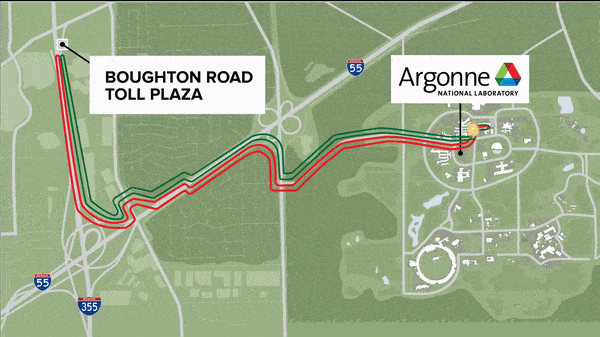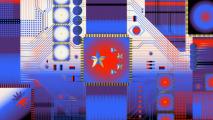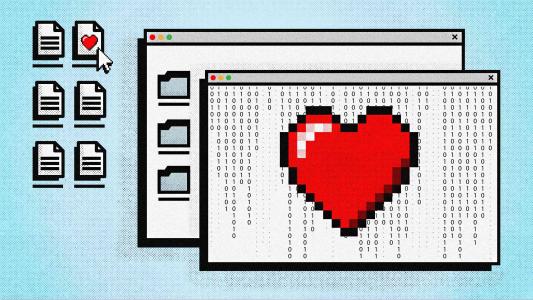In January, scientists from the U.S. Department of Energy and the University of Chicago announced that they’d built a 52-mile-long “quantum loop” in the suburbs of Chicago.
It’s purpose: serve as a testbed for the types of experiments needed to build a functional quantum Internet. Now, the team from Argonne National Laboratory and the University of Chicago has revealed that it has successfully entangled two photons across the loop — putting it one major step closer to that goal.
To understand why a quantum Internet is so desirable, it helps to first think about the shortcomings of the computers and Internet we currently use.
Not only would quantum Internet be faster than our current Internet, but it would also be virtually unhackable.
Today’s personal computers store information in bits, each of which has a value of either zero or one at any given point in time.
Quantum computers, however, store information in quantum systems called qubits, which can have a value of zero, one, or both zero and one.
That’s thanks to a strange characteristic of the quantum world known as “superposition,” which allows quantum systems to exist in multiple states simultaneously — they only snap into one state when we observe or measure them.
The ability to be in multiple states at once allows qubits to store and process more information than bits — for every qubit you add to a quantum computer, you double its processing power. That means a quantum computer with enough qubits could solve computing problems that are currently impossible for classical computers to process quickly enough to be useful.
In addition to helping us process information, superposition can also help us securely transmit it, which is where the idea of a quantum Internet and the “quantum loop” in Chicago comes into play.
To understand that, though, we first need to dig into another facet of the quantum world: entanglement, something so bizarre that Albert Einstein famously described it as “spooky action at a distance.”
Quantum systems have the ability to become entangled, meaning that they will share a strange bond even if they’re far apart from one another.

Scientists from Argonne National Laboratory and the University of Chicago entangled photons (light particles) across the quantum loop, a 52-mile fiber optic network in the Chicago suburbs. The animation shows entanglement created and distributed through pair of 26-mile loops from Argonne National Laboratory in Lemont, IL to the I-355 Boughton Road Toll Plaza in Bolingbrook, IL, and back again. Image courtesy of Argonne National Laboratory.
A common analogy for this involves two particles that have been entangled so that if one is red, the other has to be green. In their quantum states, each particle is actually red and green — thanks, superposition — and it’s only when someone observes one particle that it becomes either red or green.
Here’s the weird part: even if you separate the two particles by a great distance, the instant you observe one particle — and find that it’s, say, green — the other particle stops being in a state of superposition and snaps into its red state.
It’s like they’re somehow communicating with one another at a speed faster than light — hence “spooky action at a distance.”
It’s easy to see how entanglement could be useful for a new kind of Internet. We can entangle qubits, separate them, and then use their strange connection to transmit information.
Not only would this quantum Internet be faster than our current Internet, but it would also be virtually unhackable — the people on either side of a transmission would instantly know if anyone tried to intercept the information since the mere act of observation would affect it, snapping it out of superposition and into a single state.
Researchers have already figured out ways to create entangled particles and send them across incredible distances — in 2017, a team of scientists in China successfully sent a pair of entangled photons from a satellite in space to two bases on Earth separated by a distance of 745 miles.
Quantum system entanglement is so bizarre that Albert Einstein famously described it as “spooky action at a distance.”
That might make the Chicago team’s entanglement across its 52-mile-long quantum loop, which consists of two connected 26-mile-long fiber-optic cables, seem trivial by comparison.
But entangling particles through space is far easier than on Earth. Here, scientists have to account for all the interference produced within our planet’s atmosphere, which can affect the entanglement.
“In the real world, the fiber cables are expanding and contracting as the temperature changes. There is also vibration and noise from the environment such as local traffics,” Tian Zhong, Argonne scientist in the Nanoscience and Technology Division and assistant professor of Molecular Engineering at UChicago, explained in a press release. “These are all factors that can affect the quantum signal transmission, and that we can only find out by performing an experiment of this magnitude under real-world operating conditions.”
The Chicago loop is one of the longest ground-based channels for quantum communication in the entire United States. That makes successfully entangling photons across it a huge milestone for the nation’s quantum researchers — and a huge step forward along the path toward an entirely new kind of Internet.





